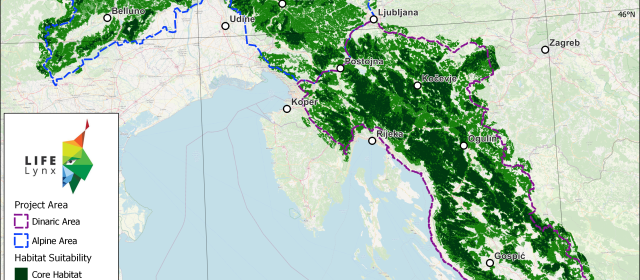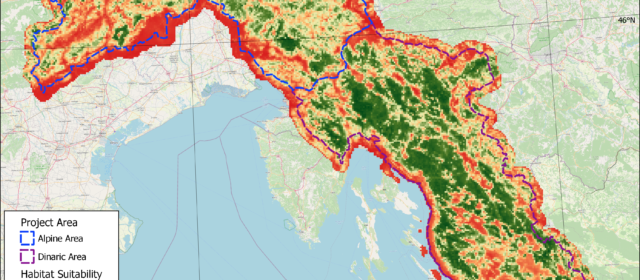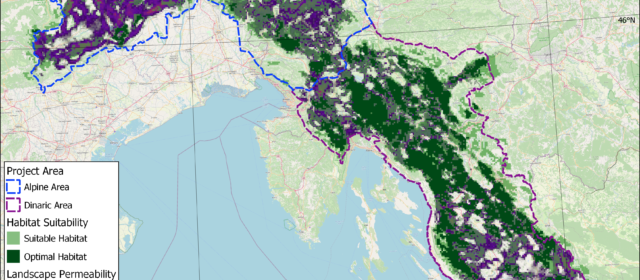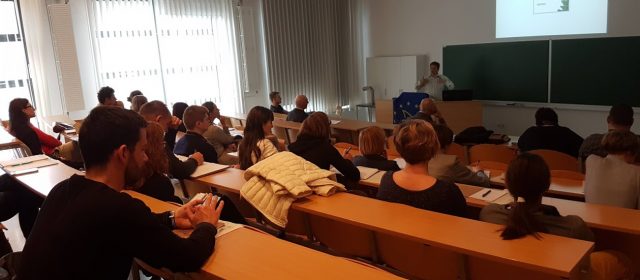Assessing the Spatial Connectivity of the Dinaric-SE Alpine Lynx Population and Isolation With Other Populations for Long-term Spatial Planning
Habitat for any species is divided into habitat patches, areas with favourable conditions for the species. These habitat patches are separated by matrix areas, where individuals can move through but will not permanently reside, and barriers, where movement of individuals is difficult. However, human development changes the landscape, decreases habitat, introduces new barriers, and pushes fragmentation to the point where it is currently recognized as one of the main threats to lynx, as well as for many other endangered species, and a critical obstacle to population/species recovery.
The Dinaric Mountains and the Alps are fragmented, although habitat quality within all massifs has improved considerably since the eradication of lynx in the early 20th century. Open lowlands, rivers and valleys with human settlements, and fenced traffic lines hinder the further spread of the Dinaric-SE Alpine lynx population. Genetic data indicate that this fragmentation has caused complete isolation from neighbouring populations since the re-introduction forty-three years ago. Additionally, lynx are biologically poor dispersers. An important step towards convergence of the fragmented dems of the Dinaric lynx population and its neighbouring populations is evaluating the biological, ecological and geographic possibilities and constraints. The traditional tool used to conserve populations and their natural environment has primarily been the creation of protected areas. It has become increasingly apparant that an important aspect in the conservation process is to connect suitable habitats and populations to one another to allow the migration of species across the entire (meta)-population range. The goal of this action is to provide scientific background (maps, habitat/connectivity models, gene flow charts, PVA analysis…) for preparation of (1) guidelines for environmental impact assessment – addressing within population connectivity, and (2) internationally supported guidelines for establishing connectivity between Dinaric-SE Alpine, and neighbouring populations.
Project outputs
- Technical report: Dispersal probability and potential connectivity between Dinaric-SE Alpine and neighbouring lynx populations and their consequent effect on their mutual viability: methodological perspective (EN, pdf)
- Report on Habitat suitability and connectivity models for lynx between and within the SE Alps and Diinaric Mountains area (EN, pdf)
- Interactive map
- GIS data (zip)
- GLM based Lynx Habitat Suitability Map (PNG)
- Maxent based Habitat Suitability Model (PNG)
- Suitable habitat and optimal habitat patches (PNG)
- Habitat Connectivity Map (PNG)
- Scientific article: Potočnik, Hubert, Črtalič, Jaka, Kos, Ivan, Skrbinšek, Tomaž (2020). Characteristics of spatial use and importance of landscape features for recovering populations of Eurasian lynx (Lynx lynx). Acta biologica Slovenica, volume 63, issue 2, str. 65-88
- Workshop on spatial connectivity – abstract (SLO, pdf)
Related news

Update of the Habitat suitability model

Report on Habitat suitability and connectivity models for lynx in SE Alps and Dinaric Mountains

New habitat suitability models for lynx in Dinaric and SE Alps

